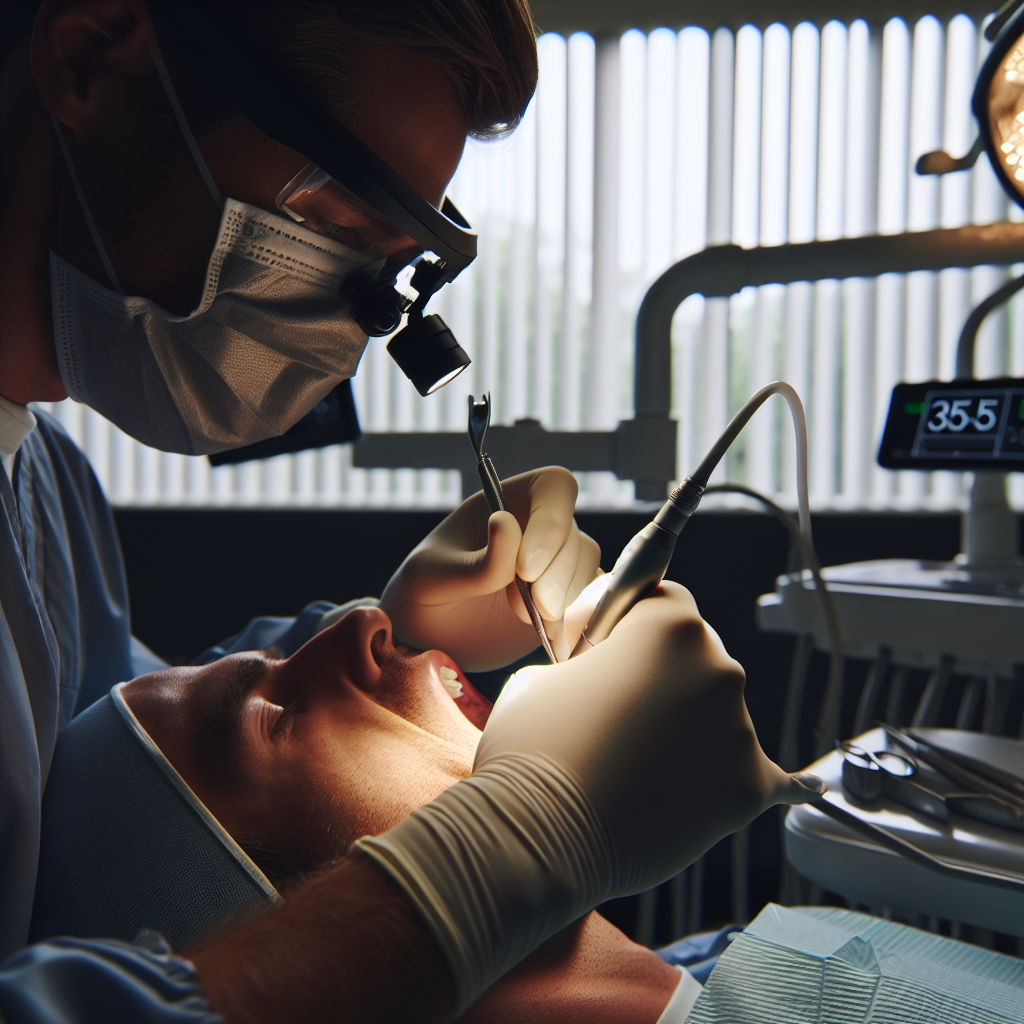The Ultimate Guide to Non-Anesthesia Dental Procedures in California5 min read

Are you looking for a comprehensive overview of anesthesia-free dental options available in California? Many patients prefer to avoid general anesthesia for dental procedures due to potential risks and side effects. Fortunately, there are several safe and effective alternatives that allow you to receive necessary dental treatments without being put under. This guide will cover the types of non-anesthesia dental procedures offered by California providers, along with state regulations and requirements.
Types of Non-Anesthesia Dental Procedures
When it comes to anesthesia-free dentistry, California patients have access to a range of options depending on their specific needs and the type of procedure being performed. The most common non-anesthesia dental treatments include:
Sedation Dentistry
While not the same as general anesthesia, sedation dentistry uses medication to help patients relax during dental procedures. Options include:
- Nitrous oxide: Also known as laughing gas, this inhaled sedative helps reduce anxiety and discomfort during treatment
- Oral conscious sedation: Patients take a prescribed sedative pill prior to their appointment to enter a deeply relaxed state
- IV sedation: Administered intravenously, this type of sedation allows for more precise dosage control and deeper relaxation
Local Anesthesia
For many common dental procedures, local anesthetic injections are sufficient to numb the treatment area and prevent pain. This tried-and-true approach is a staple of modern dentistry. Some of the most frequently used local anesthetics include:
- Lidocaine
- Articaine
- Bupivacaine
- Prilocaine
Local anesthetics typically take effect within a few minutes and can last for several hours, allowing for comfortable and pain-free dental treatment.
Laser Dentistry
Advancements in dental laser technology have made it possible to perform many soft tissue procedures with minimal discomfort and bleeding. Some key benefits of laser dentistry include:
- Reduced need for anesthesia
- Faster healing times
- Improved precision
- Less post-operative pain and swelling
Common laser dentistry applications range from gum reshaping and canker sore treatment to cavity detection and tooth sensitivity relief.
California Regulations for Non-Anesthesia Dental Procedures
To ensure patient safety, California has established clear guidelines and requirements for dental providers offering non-anesthesia treatments. Key regulations include:
Licensing and Certification
All California dentists must hold a valid state license to practice dentistry. Additional permits or certifications may be required to administer specific types of sedation:
| Sedation Type | Required Permit |
|---|---|
| Nitrous Oxide | No separate permit needed |
| Oral Conscious Sedation | Oral Conscious Sedation Certificate |
| IV Sedation | General Anesthesia Permit |
Facility and Equipment Standards
Dental offices providing sedation or anesthesia services must meet strict facility and equipment requirements, including:
- Proper monitoring devices
- Emergency airway equipment
- Defibrillator
- Recovery area
- Regular safety inspections
These regulations help ensure that patients receive non-anesthesia dental treatments in a safe and properly equipped environment.
Patient Considerations for Non-Anesthesia Dental Care
If you’re considering anesthesia-free dentistry in California, there are several factors to keep in mind to ensure a positive treatment experience:
Discuss Your Options with Your Dentist
Every patient’s needs are unique, so it’s essential to have an open conversation with your dentist about your treatment options, preferences, and any concerns you may have. Your dentist can help determine which non-anesthesia approaches are best suited for your specific case.
Communicate Your Anxiety Levels
Dental anxiety is a common issue that can make patients hesitant to undergo necessary treatments. If you experience fear or anxiety related to dental procedures, let your provider know. They can offer coping strategies, relaxation techniques, or alternative approaches to help you feel more at ease.
Follow Pre- and Post-Treatment Instructions
To ensure optimal results and minimize the risk of complications, it’s crucial to carefully follow any pre- or post-treatment instructions provided by your dental team. This may include:
- Fasting requirements before sedation
- Arranging for transportation after your appointment
- Avoiding certain foods or activities after treatment
- Taking prescribed medications as directed
By adhering to these guidelines, you can support a smooth and successful anesthesia-free dental experience.
Frequently Asked Questions
Are non-anesthesia dental procedures safe?
When performed by a qualified and properly equipped dental provider, non-anesthesia treatments are generally considered safe for most patients. However, as with any medical procedure, there are always some risks involved. Your dentist will review your medical history and discuss any potential complications before proceeding with treatment.
How can I find a provider offering anesthesia-free dentistry in my area?
Many California dental practices offer non-anesthesia treatment options. To find a provider near you, start by searching online for terms like “sedation dentistry” or “laser dentistry” along with your city or region. You can also ask for recommendations from friends, family, or your regular dentist if they don’t offer these services themselves.
Will I feel any pain during an anesthesia-free dental procedure?
The goal of non-anesthesia dentistry is to minimize discomfort and pain during treatment. Depending on the specific procedure and approach used, you may feel some mild pressure or sensation, but should not experience sharp pain. If you do feel any discomfort, let your dentist know right away so they can adjust their technique or administer additional local anesthetic if needed.
Are there any age restrictions for receiving non-anesthesia dental treatments?
In general, non-anesthesia dental procedures can be performed on patients of all ages, from children to seniors. However, some specific sedation options may have age limitations or require special considerations for younger or older patients. Your dentist will evaluate your individual case and recommend the most appropriate treatment approach based on your age, health status, and other factors.
Conclusion
For California residents seeking alternatives to general anesthesia for dental procedures, there are numerous safe and effective options available. From sedation dentistry and local anesthesia to laser treatments, patients can access the care they need while minimizing the risks and side effects associated with being put under.
By understanding the types of non-anesthesia dental procedures offered, as well as the state regulations and patient considerations involved, you can make an informed decision about your dental care. Remember to discuss your options and concerns with a qualified provider to determine the best approach for your unique needs and preferences.
With the right preparation and communication, you can experience the benefits of modern, anesthesia-free dentistry and maintain optimal oral health with confidence and comfort.
